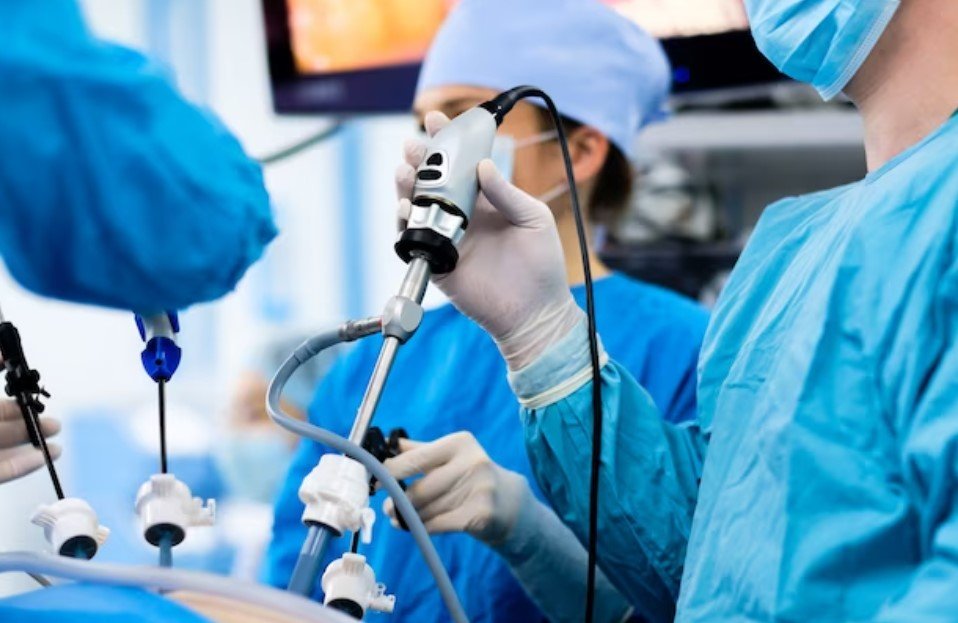
Obesity Surgery
Obesity surgery, bariatric surgery or metabolic surgery are surgical modifications to the stomach and small intestines that limit the person's eating and reduce the absorption of food, thus enabling weight loss. It is a proven fact that surgery is the most effective treatment for obese people
Are Obesity Surgery, Bariatric Surgery and Metabolic Surgery the Same Thing?
All three mean the same thing. The reason why these surgeries are also called metabolic surgeries is that they also cure diabetes, high cholesterol-lipid levels and hypertension caused by overweight (let's remember that these three diseases together are called metabolic syndrome). In other words, bariatric surgery corrects metabolic diseases while making the patient lose weight.
Types of Obesity Surgery
There are mainly 3 types,
- Restrictiverestricting food intake (stomach reduction surgeries)
- Malabsorptive;impairing & inhibiting food absorption (changes in the small intestine)
- Mix;containing both features
Today, gastric bypass and sleeve gastrectomy (gastric sleeve) surgeries are the most common methods.
Indications for Obesity Surgery (Who Should Have Surgery)
The gold standard for obesity surgery is BMI > 40 kg/m2 or BMI > 35 + the presence of comorbidities caused by obesity (diabetes, hypertension, hyperlipidemia) and the patient's inability to lose weight with diet and exercise.
Patients with coronary artery disease, severe pulmonary insufficiency, cancer, liver cirrhosis and portal hypertension, alcohol and drug addicts, Crohn's disease should not be operated on or should be selective (relative contraindication). Patients over the age of 55-60 years have less weight loss, more weight regain and more complications and therefore more mortality.
Recently, patients with BMI 30-35 kg/m2 + and comorbidities are considered candidates for surgery.
What are the Common Obesity Surgeries?
- Gastric bypass
- Sleeve gastrectomy
- Adjustable gastric band(Adjustable gastric band, stomach clamp)
- Biliopancreatic diversion + duodenal switch(BPD + DS)
Gastric Bypass (Roux-en-Y Gastric Bypass)
Roux en Y Gastric bypass is the gold standard in bariatric surgery. It reduces 60-80% of excess weight.
It is the gold standard in bariatric surgery. This surgery has two components. A 30-50 ml pouch is prepared from the first part of the stomach. This allows the patient to eat less and get full quickly. In the second component, an adjustment is made in the small intestine (jejunum) to reduce the digestion and absorption of fat. The effect of the change in the hormones secreted by the intestine also leads to a quicker satiety (satisfaction) and a longer feeling of fullness. For this, the small intestine is cut 50 cm from the ligament of Treitz. The end of the intestine is sutured to the prepared gastric pouch (afferent anus). The length of the afferent anus is adjusted between 75-150 cm. The higher the BMI, the longer the length of the afferent anus is left.
This surgery can reduce approximately 60-80% of excess weight. However, it is technically more complicated and difficult than gastric banding and sleeve gastrectomy, so there are more complications. It may cause vitamin and iron deficiency and may require lifelong medication.
Sleeve Gastrectomy (Gastric Sleeve Gastrectomy)
Sleeve gastrectomy is very popular because of its easy applicability. It allows 40-60% of excess weight to be lost.
Sleeve means dress sleeve (yen). In laparoscopic sleeve gastrectomy, 80% of the stomach is removed longitudinally and the stomach takes the shape of a tube. As the stomach shrinks, the patient eats less and feels full more quickly. The effect of the change in the hormones secreted by the intestine also leads to a feeling of satiety (satisfaction) and a longer feeling of fullness.
This surgery can help you lose about 40-60% of the excess weight. However, the technique is simpler and easier than gastric bypass, so there are fewer complications.
The disadvantage of sleeve gastrectomy is that since the stomach is removed, there is no chance of returning to the old anatomy (nonreversible). If not performed with the appropriate technique, the patient may not lose weight. This surgery may also cause vitamin and iron deficiency.
Adjustable Gastric Band (Stomach Clamp, Hourglass Stomach)
The adjustable gastric band is also known as a gastric clamp or hourglass stomach. The band has been abandoned due to complications.
An inflatable band is placed on the first (upper) part of the stomach. This creates a small stomach pouch above the band. The reservoir that inflates the gastric clamp is placed subcutaneously. The band is inflated or deflated with saline and then passed through the upper gastric pouch. alt tarafa geçişin çapı ayarlanır. Küçük mide hastanın kolay doymasını ve az yemesini sağlar.
Advantages: This surgery allows to lose approximately 30-50% of excess weight. It is technically the simplest obesity surgery with the least complications in the early period. It is a recyclable surgery (the band can be removed). Vitamin and iron deficiency is the least common surgical technique.
Disadvantages: The gastric band causes slower and less weight loss. The band is a foreign body for the body. The band can slip out of place, perforating the stomach over time. It can cause reflux. Because of these long-term complications, about half of the patients need to have the band removed again. Therefore, this surgery has been replaced by sleeve gastrectomy.
Biliopancreatic Diversion + Duodenal Switch (BPD/DS)
Biliopancreatic diversion + duodenal switch is currently the most effective surgery for weight loss.
This surgery has 3 components. First, a sleeve gastrectomy is performed (sleeve gastrectomy reduces the patient's eating); second, half of the small intestines are bypassed, i.e. they are excluded from digestion; third, food is mixed with bile and pancreatic fluid only in a section of about 70 cm (impairs fat and protein absorption).
Advantages: It is the surgery that provides the highest weight loss and the best control of diabetes and its complications among other surgeries. It allows you to lose about 70% of the excess weight.
Inconvénients: It is a complex surgery. It is difficult to perform laparoscopically. For these reasons, complication and mortality rates are higher. Impaired protein absorption can cause serious problems. In addition to iron absorption, absorption of calcium and fat-soluble vitamins is impaired in almost all patients (A,D,E,K) and the patient needs to take medication continuously.


Contact
We are at your service 24/7
Error: Contact form not found.
Patient Satisfaction
Beautiful thoughts from all of you
If you're looking for car insurance, we will help you to find the You bring emendous value to company. We have generated more leads in the last

Farhan Smith Health Mentor
If you're looking for car insurance, we will help you to find the You bring emendous value to company. We have generated more leads in the last

Elwin Dawson Medical Specialist
If you're looking for car insurance, we will help you to find the You bring emendous value to company. We have generated more leads in the last

Poral Dawson Home Nurse
If you're looking for car insurance, we will help you to find the You bring emendous value to company. We have generated more leads in the last


